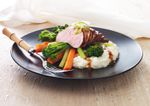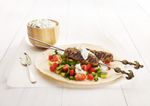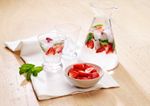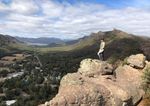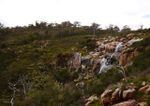Aussies slip up on their sugary drink knowledge
by Alison McAleese, LiveLighter Victoria Campaign Manager and Dietitian
- May 17, 2019
- Leave a comment
- Families
- Marketing
- Healthy eating
- Mythbusting
- Sugary drinks
- Industry
- Sugar
- Wellness
- Research
- Smart Swaps
- Drinks
- Advocacy
It’s almost impossible to escape today’s enormous amount of sugary drink availability and promotion. And with more sugary drink choices than ever, messages about healthier options are far more difficult to hear.
The latest findings from the annual Shape of Australia survey, presented at the Cancer Council’s Behavioural Research in Cancer Control conference in Perth, shine a light on Australians’ perceptions of sugary drinks and confirm just how hard big beverage brands’ sneaky marketing tactics are hitting us.
What the survey found
Results from the LiveLighter survey of more than 2,000 Australians aged 18-55[1] reveal that not only are many Australians hooked on sugary drinks, some slip up when it comes to identifying which drinks are packed with sugar. The findings offered the following insights:
- Less than half (48%) included flavoured water containing sugar in their definition of a sugary drink, while a third (33%) failed to identify flavoured milks as a sugary drink. This compares with the majority (93%) who correctly identified soft drink as a sugary drink.
- Some also failed to identify fruit juices (30%), sports drinks (28%) and fruit drinks (27%) as sugary drinks.
- More than four in five (81%) purchase sugary drinks in supermarkets, while over a third of (35%) buy them from fast food outlets and further quarter (27%) from restaurants, bars and cafes.
How does this impact Aussies?
The fact that beverage manufacturers knowingly cherry-pick favourable features of their products, essentially placing ‘health halos’ on these drinks, may cause people to think they’re making a healthy choice by choosing these drinks over soft drinks.
Given the drink size, added sugar content and expanding range of products and flavours available, many of us could be sipping down far more sugar than we signed up for.
Take home message to people who think they’re buying healthy drinks
Start by looking beyond the ‘halo’ health claims on the labels of these drinks and take the time to check the nutritional information panels to see just how much sugar some drinks contain. You may be shocked to know some of these drinks have as many as 16 teaspoons of sugar – that’s 64 grams!
The dilemma is, at the moment consumers have no clear way of knowing how much sugar has been added by looking at the label. It’s unfortunately impossible for us to distinguish between naturally occurring sugars and added sugar, making it difficult for people to make a healthy, informed choice
Because of this, we’re calling for added sugar labelling to help people make healthier choices.
There’s strong support for added sugar labelling, with three quarters of Australians supporting the change. It’s time to give people the information they want and need to make the healthy choice.
About the Behavioural Research in Cancer Control Conference
The Behavioural Research in Cancer Control conference is supported by Cancer Council Australia and will be hosted by Cancer Council WA. It runs from May 15 to 17. It brings together clinicians and researchers from across Australia to present the latest research on policies and programs that can ultimately decrease the burden of cancer.
[1] LiveLighter’s annual Shape of Australia survey analysed the health, nutrition and physical activity behaviours of more than 2,000 Australians aged 18-55.
